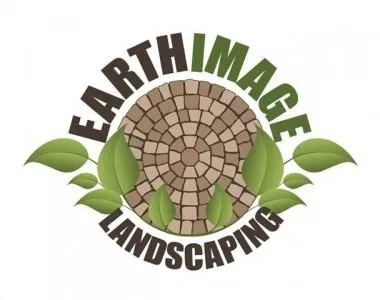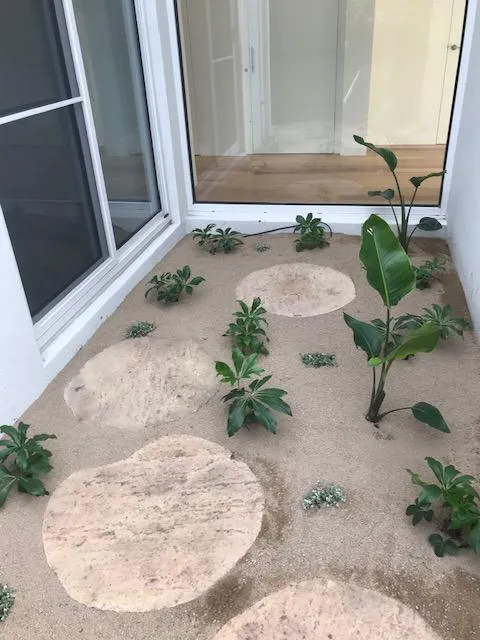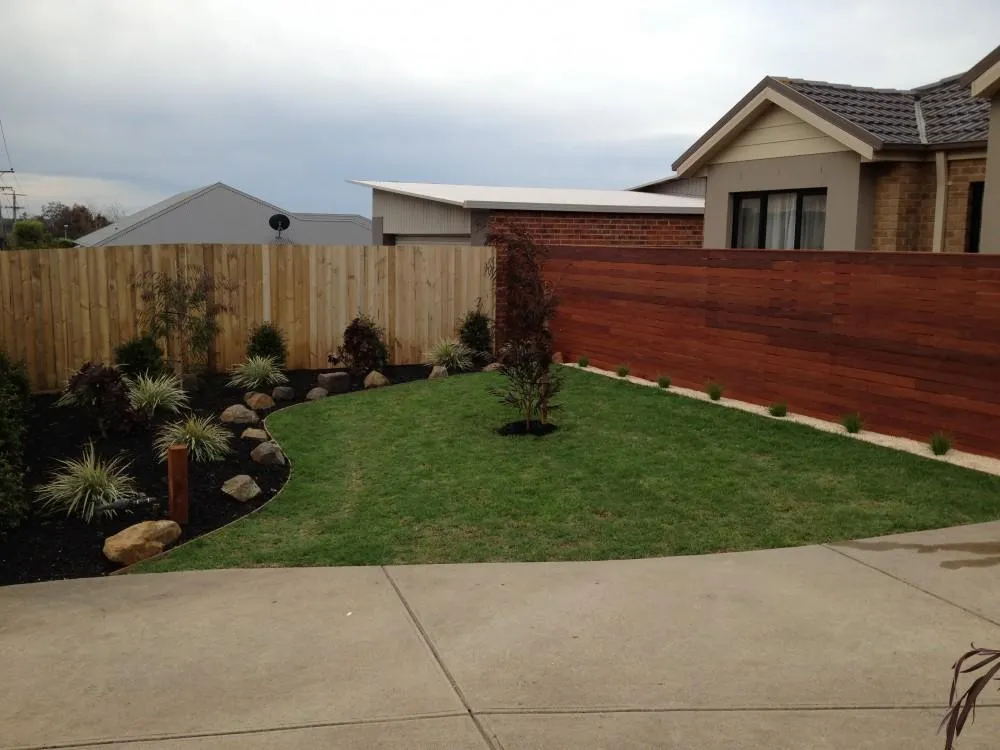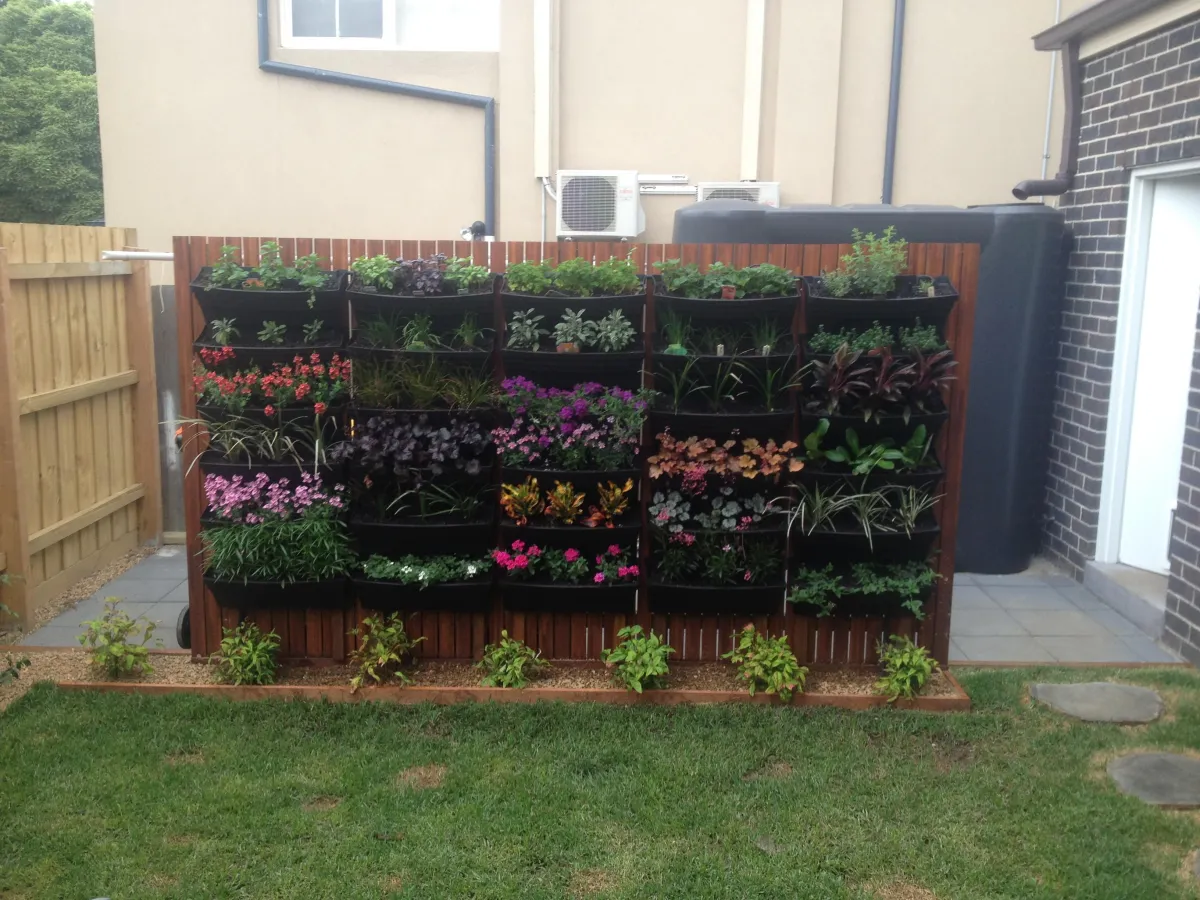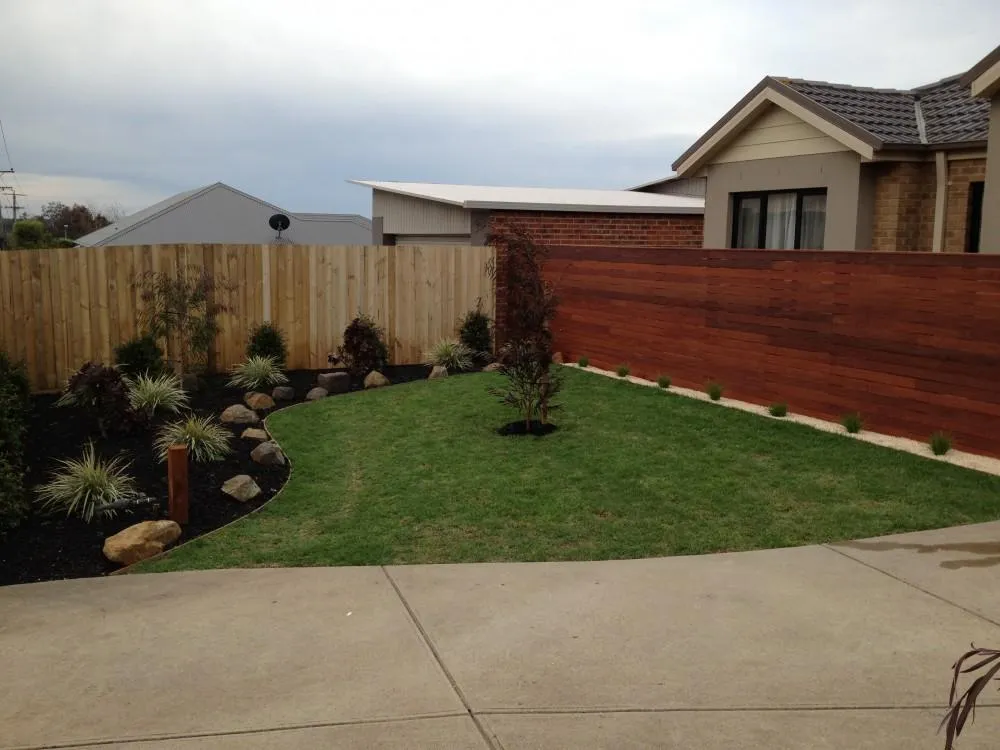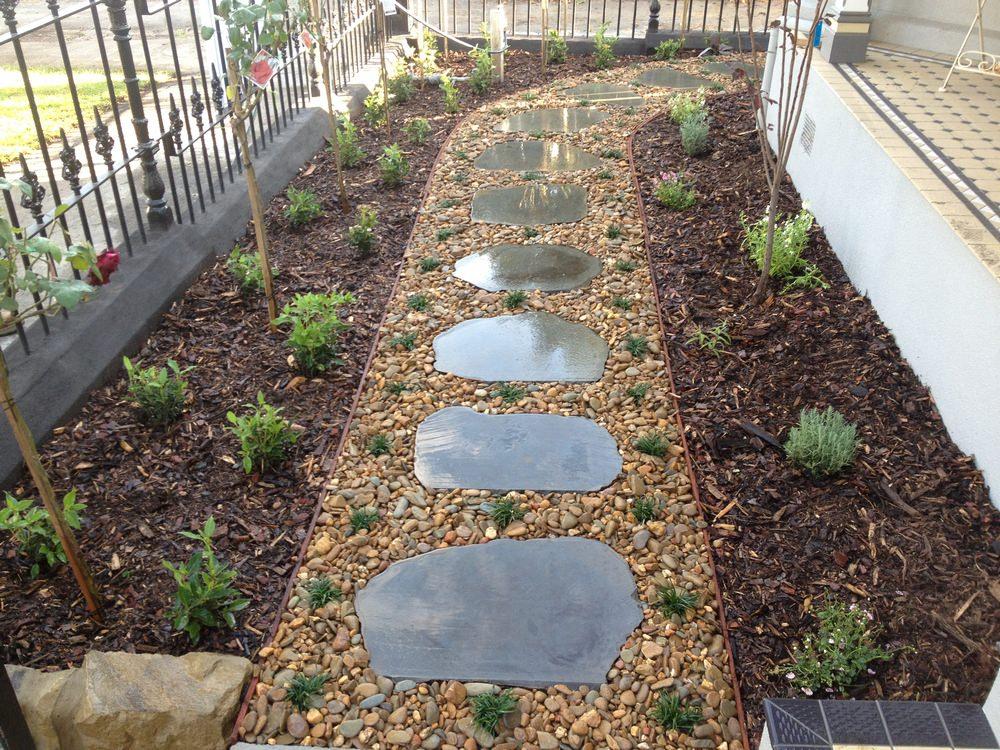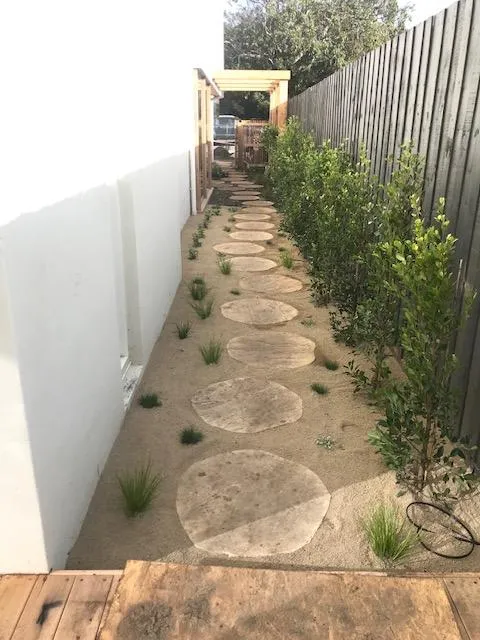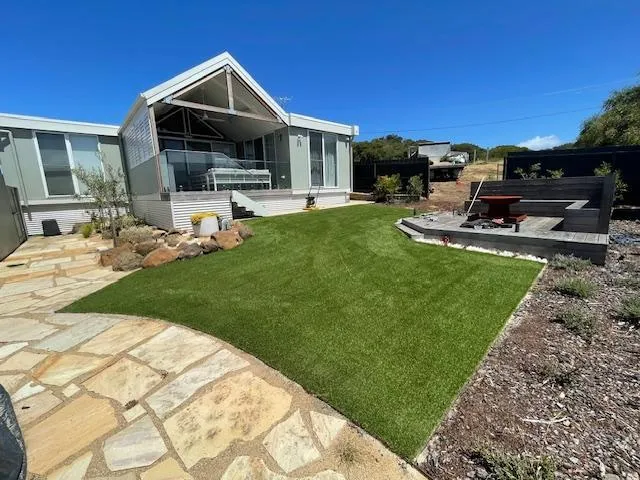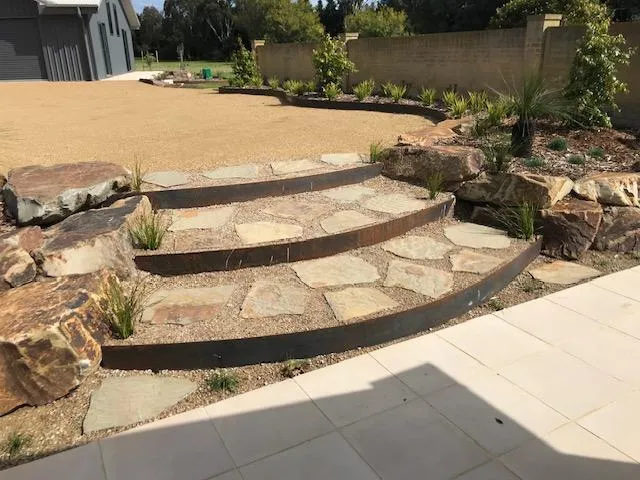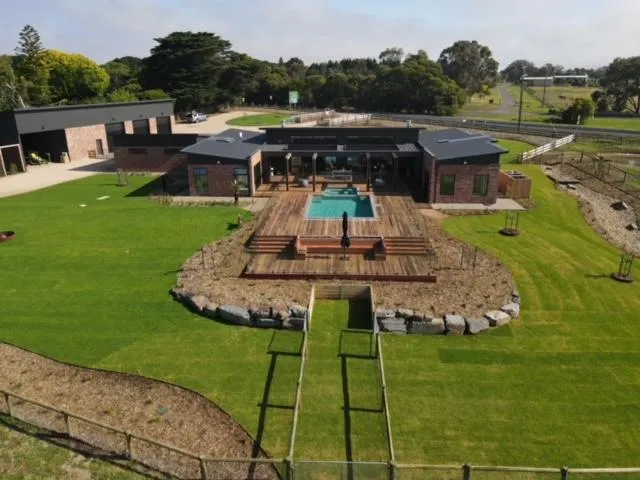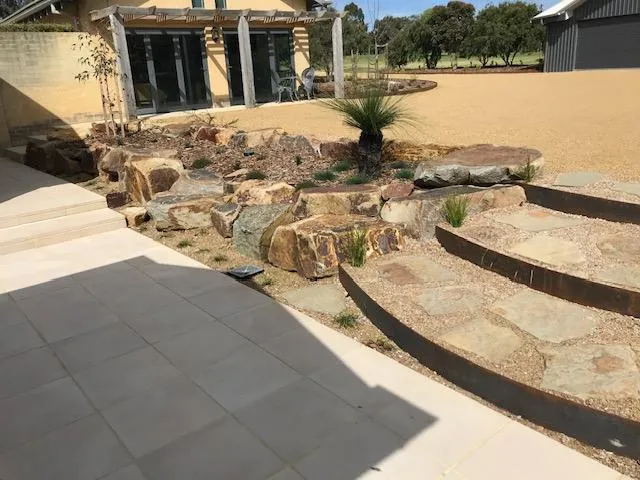We're located in the heart of Buderim, Sunshine Coast
We're located in the heart of Buderim, Sunshine Coast
Sunshine Coast
Project Showcase
Explore our Project Showcase to see the transformation of outdoor spaces through our expert landscaping services. From lush gardens to elegant hardscapes, each project highlights our commitment to quality and creativity.

Using Softscape for Sustainable Gardens
Creating a beautiful and sustainable garden can be a rewarding challenge. Softscape elements, such as plants, trees, soil, and mulch, play a vital role in achieving this green goal.
They're the living parts of the garden that bring it to life, making it not just functional but also inviting. Using the right blend of softscape elements can transform any area into a picturesque garden that thrives while staying eco-friendly.
A sustainable softscape is more than just planting a few shrubs and hoping for the best. It involves carefully selecting plant species that are well-suited to the local climate and require minimal resources.
This approach not only saves water but also reduces maintenance efforts, keeping ongoing care efficient. It's all about making nature work for you, integrating plants that adapt easily, and ensuring they support local wildlife and biodiversity.
By understanding softscape design principles, anyone can enhance their property with lush greenery that supports the environment. Thoughtful planning results in gardens that flourish year after year, providing a peaceful retreat in both urban and rural settings.
Uncover the secrets to mastering softscape and watch your garden space grow beautifully.
Understanding Softscape for Sustainable Gardens
Softscape refers to the use of live horticultural elements to enhance outdoor spaces. These are the green heart of any landscape, bringing vibrancy and life to otherwise stark areas.
In a sustainable setting, softscape elements are chosen with care. They need to fit the environment and work well with existing ecosystems. This careful selection includes choosing indigenous plants that thrive naturally with local weather, soil types, and available water resources.
Designing with softscape means considering how different plant species interact. Some plants provide ground cover, while others offer shade. Tall trees, shrubs, and flowering plants create layers and textures, providing diversity within the garden. It's a balanced mix that brings both aesthetic appeal and practical benefits like shade and privacy.
The goal of sustainable softscape design is to create long-lasting, low-maintenance gardens. Such gardens require fewer chemical inputs and less water, using natural processes to stay healthy. They encourage the presence of beneficial insects and birds, which helps control pests naturally.
By focusing on sustainability, gardens can become thriving ecosystems that handle environmental challenges with ease.
Key Elements for Successful Softscape Design
Successful softscape design involves a few key elements that work together to create a harmonious landscape. Here's a list to help plan effectively:
1. Plant Selection: Choose plants that are native to the area. They are easier to maintain and often need less watering and fertilising. Native plants also support local wildlife.
2. Diversity: Incorporate a variety of plant species. This not only adds visual interest but also creates a robust ecosystem. Having different types of plants can help fight off pests and diseases.
3. Layering: Use plants of varying heights to create a layered look. This adds depth to the garden and provides shade and shelter for smaller plants and creatures.
4. Soil Health: Ensure the soil is healthy and full of nutrients. Healthy soil supports plant growth and improves water retention, which is crucial for sustainable gardens.
5. Irrigation: Set up an efficient irrigation system. Drip irrigation is a great option as it delivers water directly to the plant roots, reducing waste.
By focusing on these elements, landscapes can become more than just green spaces. They transform into living environments that offer beauty, function, and sustainability. These strategies help maximise the potential of any garden space, providing a thriving outdoor area that meets environmental goals while staying attractive and practical.
Benefits of Sustainable Softscape
Using sustainable softscape offers numerous advantages. It greatly reduces maintenance costs, as gardens designed with native plants demand fewer resources, leading to savings on water and fertiliser. Less upkeep is beneficial, freeing up time and effort that can be directed elsewhere.
Sustainable gardens also enhance biodiversity, providing habitats for local wildlife. Birds, bees, and butterflies find these areas attractive, helping in pollination, which is vital for our ecosystem. These green spaces contribute positively to air quality too, as plants absorb carbon dioxide and produce oxygen, making the air cleaner.
A well-planned softscape adds aesthetic value, creating a welcoming environment that boosts morale and productivity. An appealing landscape stands out, potentially drawing attention and leaving a lasting impression. Investing in a sustainable softscape is a wise move as it ensures a dynamic, thriving environment.
Tips for Maintaining a Sustainable Softscape
Keeping a sustainable garden healthy requires some effort. Follow these tips for effective maintenance:
1. Regular Monitoring: Check plants regularly for pests or diseases. Early detection helps in quick treatment and prevents spread.
2. Prune and Trim: Remove dead or overgrown branches to encourage new growth and maintain a tidy appearance.
3. Water Wisely: Use water-efficient systems like drip irrigation. Water plants deeply and less frequently to encourage deep root growth.
4. Mulching: Apply mulch around plants to retain soil moisture and reduce weed growth. Organic mulch also adds nutrients to the soil as it breaks down.
5. Compost: Incorporate compost into the soil to improve its quality. Composting natural waste from the garden reduces the need for chemical fertilisers.
By following these strategies, sustainable softscapes can remain vibrant and productive. Regular care ensures gardens look their best year-round, fulfilling their role in providing an eco-friendly space. This focus on maintenance enhances the garden's overall value, keeping it an asset for any area.
Achieving Sustainability through Softscape Design
Mastering softscape involves more than just planting greenery. It requires thoughtful design and ongoing care to achieve sustainability. A well-crafted softscape offers a multitude of benefits.
From boosting biodiversity to enhancing air quality, these green spaces play a crucial role in landscapes. Sustainable practices make these landscapes viable long-term. They minimise resource use and upkeep, making them cost-effective choices. By selecting the right plants and ensuring proper maintenance, you can enjoy beautiful, thriving gardens.
If you're looking to transform your property with a sustainable softscape, contact EarthImage Landscaping. Our team can help you create the perfect eco-friendly landscape that suits your needs and enhances your property's appeal. Discover how our expertise in landscape design in Australia can make a difference in your outdoor spaces today!

Using Softscape for Sustainable Gardens
Creating a beautiful and sustainable garden can be a rewarding challenge. Softscape elements, such as plants, trees, soil, and mulch, play a vital role in achieving this green goal.
They're the living parts of the garden that bring it to life, making it not just functional but also inviting. Using the right blend of softscape elements can transform any area into a picturesque garden that thrives while staying eco-friendly.
A sustainable softscape is more than just planting a few shrubs and hoping for the best. It involves carefully selecting plant species that are well-suited to the local climate and require minimal resources.
This approach not only saves water but also reduces maintenance efforts, keeping ongoing care efficient. It's all about making nature work for you, integrating plants that adapt easily, and ensuring they support local wildlife and biodiversity.
By understanding softscape design principles, anyone can enhance their property with lush greenery that supports the environment. Thoughtful planning results in gardens that flourish year after year, providing a peaceful retreat in both urban and rural settings.
Uncover the secrets to mastering softscape and watch your garden space grow beautifully.
Understanding Softscape for Sustainable Gardens
Softscape refers to the use of live horticultural elements to enhance outdoor spaces. These are the green heart of any landscape, bringing vibrancy and life to otherwise stark areas.
In a sustainable setting, softscape elements are chosen with care. They need to fit the environment and work well with existing ecosystems. This careful selection includes choosing indigenous plants that thrive naturally with local weather, soil types, and available water resources.
Designing with softscape means considering how different plant species interact. Some plants provide ground cover, while others offer shade. Tall trees, shrubs, and flowering plants create layers and textures, providing diversity within the garden. It's a balanced mix that brings both aesthetic appeal and practical benefits like shade and privacy.
The goal of sustainable softscape design is to create long-lasting, low-maintenance gardens. Such gardens require fewer chemical inputs and less water, using natural processes to stay healthy. They encourage the presence of beneficial insects and birds, which helps control pests naturally.
By focusing on sustainability, gardens can become thriving ecosystems that handle environmental challenges with ease.
Key Elements for Successful Softscape Design
Successful softscape design involves a few key elements that work together to create a harmonious landscape. Here's a list to help plan effectively:
1. Plant Selection: Choose plants that are native to the area. They are easier to maintain and often need less watering and fertilising. Native plants also support local wildlife.
2. Diversity: Incorporate a variety of plant species. This not only adds visual interest but also creates a robust ecosystem. Having different types of plants can help fight off pests and diseases.
3. Layering: Use plants of varying heights to create a layered look. This adds depth to the garden and provides shade and shelter for smaller plants and creatures.
4. Soil Health: Ensure the soil is healthy and full of nutrients. Healthy soil supports plant growth and improves water retention, which is crucial for sustainable gardens.
5. Irrigation: Set up an efficient irrigation system. Drip irrigation is a great option as it delivers water directly to the plant roots, reducing waste.
By focusing on these elements, landscapes can become more than just green spaces. They transform into living environments that offer beauty, function, and sustainability. These strategies help maximise the potential of any garden space, providing a thriving outdoor area that meets environmental goals while staying attractive and practical.
Benefits of Sustainable Softscape
Using sustainable softscape offers numerous advantages. It greatly reduces maintenance costs, as gardens designed with native plants demand fewer resources, leading to savings on water and fertiliser. Less upkeep is beneficial, freeing up time and effort that can be directed elsewhere.
Sustainable gardens also enhance biodiversity, providing habitats for local wildlife. Birds, bees, and butterflies find these areas attractive, helping in pollination, which is vital for our ecosystem. These green spaces contribute positively to air quality too, as plants absorb carbon dioxide and produce oxygen, making the air cleaner.
A well-planned softscape adds aesthetic value, creating a welcoming environment that boosts morale and productivity. An appealing landscape stands out, potentially drawing attention and leaving a lasting impression. Investing in a sustainable softscape is a wise move as it ensures a dynamic, thriving environment.
Tips for Maintaining a Sustainable Softscape
Keeping a sustainable garden healthy requires some effort. Follow these tips for effective maintenance:
1. Regular Monitoring: Check plants regularly for pests or diseases. Early detection helps in quick treatment and prevents spread.
2. Prune and Trim: Remove dead or overgrown branches to encourage new growth and maintain a tidy appearance.
3. Water Wisely: Use water-efficient systems like drip irrigation. Water plants deeply and less frequently to encourage deep root growth.
4. Mulching: Apply mulch around plants to retain soil moisture and reduce weed growth. Organic mulch also adds nutrients to the soil as it breaks down.
5. Compost: Incorporate compost into the soil to improve its quality. Composting natural waste from the garden reduces the need for chemical fertilisers.
By following these strategies, sustainable softscapes can remain vibrant and productive. Regular care ensures gardens look their best year-round, fulfilling their role in providing an eco-friendly space. This focus on maintenance enhances the garden's overall value, keeping it an asset for any area.
Achieving Sustainability through Softscape Design
Mastering softscape involves more than just planting greenery. It requires thoughtful design and ongoing care to achieve sustainability. A well-crafted softscape offers a multitude of benefits.
From boosting biodiversity to enhancing air quality, these green spaces play a crucial role in landscapes. Sustainable practices make these landscapes viable long-term. They minimise resource use and upkeep, making them cost-effective choices. By selecting the right plants and ensuring proper maintenance, you can enjoy beautiful, thriving gardens.
If you're looking to transform your property with a sustainable softscape, contact EarthImage Landscaping. Our team can help you create the perfect eco-friendly landscape that suits your needs and enhances your property's appeal. Discover how our expertise in landscape design in Australia can make a difference in your outdoor spaces today!
Our Services
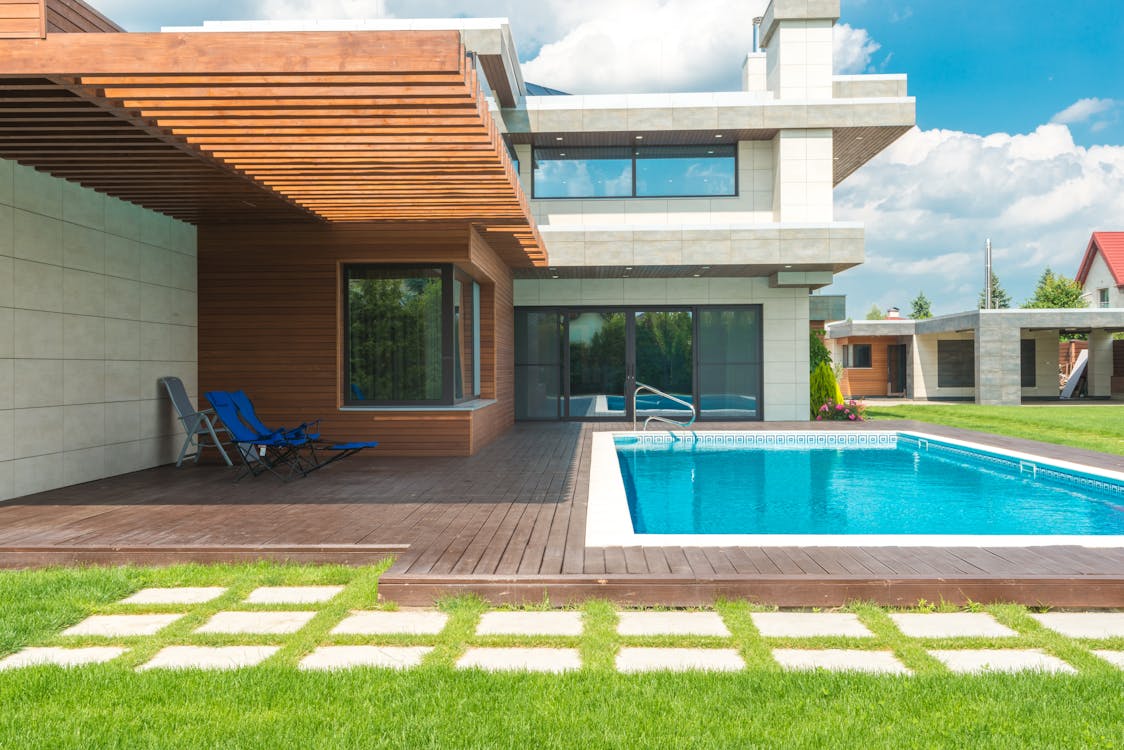
Residential Landscaping
From garden design to installation, we offer a complete range of residential landscaping services to enhance your home’s outdoor living space.
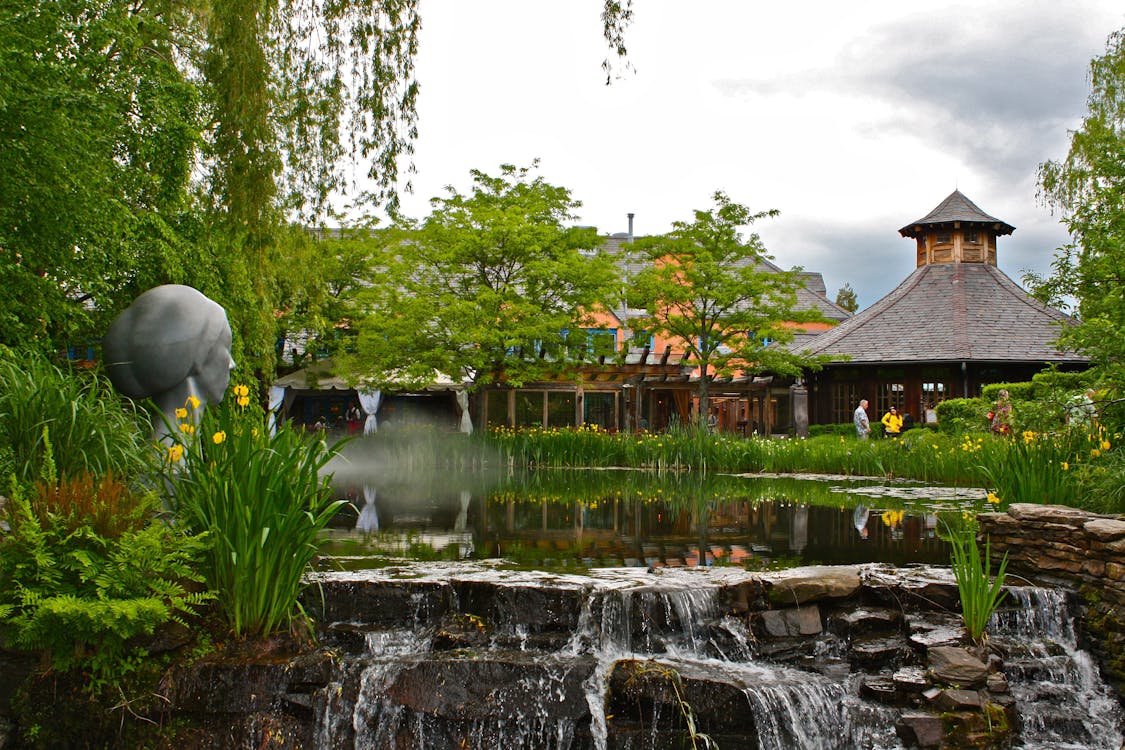
Landscape Construction
Bring your dream landscape to life with EarthImage’s expert construction services. From precision decking to intricate garden lighting, our skilled team, led by Jeremy, ensures every detail is crafted to perfection.
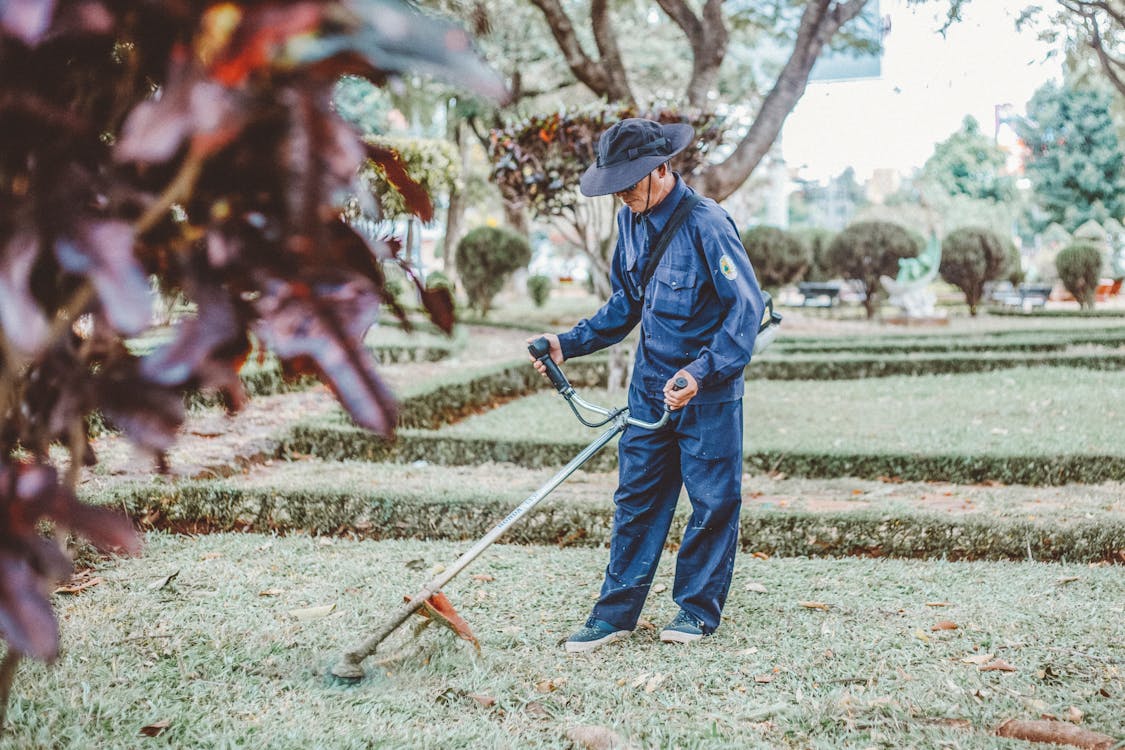
Garden Maintenance
Keep your garden looking its best year-round with our comprehensive maintenance services, including lawn care, pruning, and more.

Landscape Design
Our expert designers work with you to create a unique and personalized landscape plan that reflects your style and preferences.

Walls & Decking
Add structure and functionality to your outdoor space with our hardscaping services, including patios, walkways, retaining walls, and more.
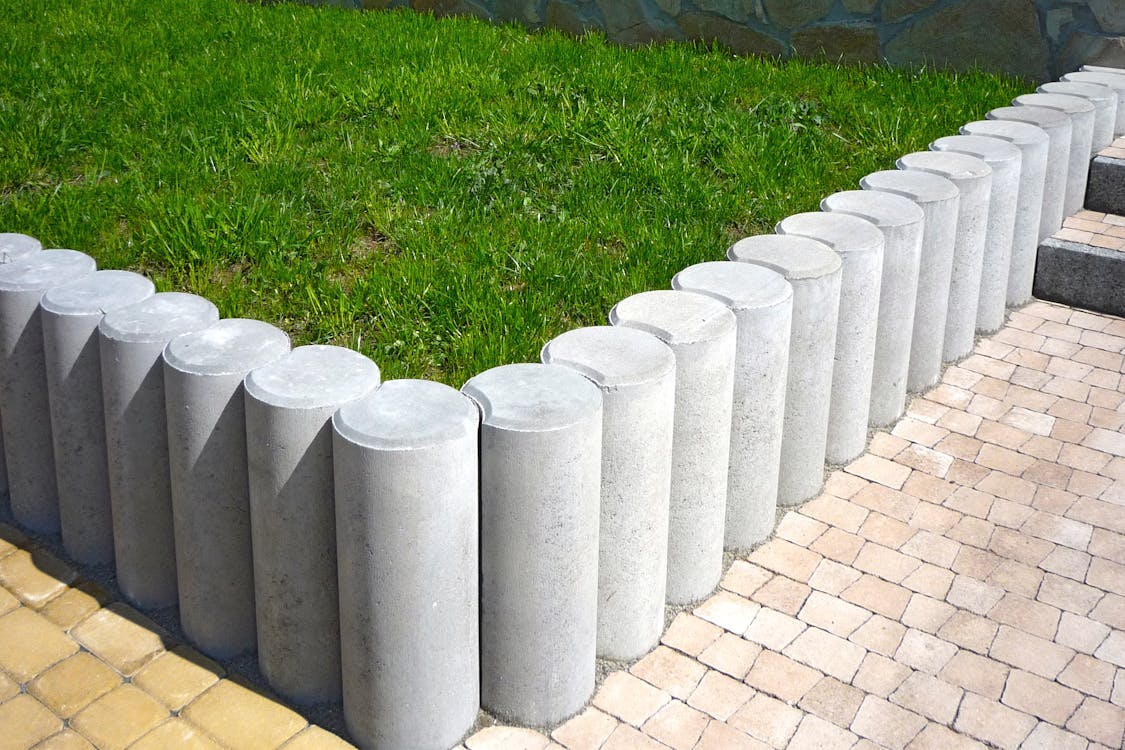
Additional Services
We provide both residential and commercial solutions
From Our Clients
"Earth Image Landscaping transformed our backyard into a beautiful oasis. Highly recommend their services!"

★★★★★
- Jane D.
"Professional, reliable, and affordable. Our go-to landscapers on the Sunshine Coast."

★★★★★
- Mark S.
"The team did an amazing job with our commercial property. It looks fantastic!"

★★★★★
- Emily R.
Frequently Asked Questions
What areas on the Sunshine Coast do you serve?
A: We serve the entire Sunshine Coast and surrounding areas - from Noosa down to Caloundra.
Do you offer free consultations?
Yes, we provide free consultations to discuss your landscaping needs and provide a quote.
What types of projects do you handle?
We handle all types of landscaping projects, including residential, commercial, garden maintenance, and hardscaping.
Follow Us
Legal
Privacy Policy
Terms & Conditions
